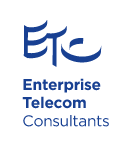01 Oct 4. Supervision of automated mass calls
4.1 Measures
Prohibition, effective August 1, 2019, of using 10-digit geographic, non-geographic and mobile numbers as the calling line identification (CLI) of calls or SMS / MMS mass-produced by an automated system
In order to enhance user confidence in the calls and messages they receive and to enable operators to better manage call flows and SMS / MMS messages issued by automated systems, ARCEP decision #18-0881 provides that, as from 1 August 2019, certain territorialized geographic, non-geographic, and 10-digit mobile numbers) can no longer be used as caller ID or message issuer ID to the called party for calls or messages transmitted by automated systems.
Exceptions to the prohibition as of August 1, 2019, to use the 10-digit geographic, non-geographic and mobile numbers as the CLI of calls or SMS / MMS mass-produced by an automated system
It is specified that the automated SMS / MMS call and send systems will be able to use extended length mobile numbers, as long as they are assigned to mobile access identification, or special and short numbers as caller ID , except :
- special numbers beginning with 089 for voice calls (as it has been since 2012);
- special numbers with higher rates and short numbers with standard or enhanced rates for SMS / MMS messages.
To respond to the request of the contributors to the public consultation, the Authority specifies that this prohibition does not apply to:
- automated systems that issue calls or messages to five or fewer different telephone numbers;
- automated systems for which the number of SMS / MMS messages sent is equivalent to or less than the number of messages received;
- or automated systems for which the number of calls made is significantly lower than the number of calls received.
The first derogation corresponds to the systems used for electronic payment terminals or for remote surveillance. The two other derogations aim to encourage the development of innovative uses using artificial intelligence (chatbots, voicebots or personal assistants) as soon as they are implemented to respond to requests from users.
1.8.2018: Incentive to insert, in interconnection contracts, the right of call barring for non-compliance with the prohibition on the use of 10-digit geographic, non-geographic and mobile numbers as calling line identification of calls or SMS / MMS mass-produced by an automated system
For the implementation of this provision, ARCEP recommends that operators take the necessary measures, for example by implementing technical devices on their network and by inserting clauses in their contracts, allowing them to interrupt the routing of calls and SMS / MMS messages sent from their networks, transiting through them or terminated on them which present one of the territorial numbers mentioned above as calling line identification, whenever it appears, in particular with regard to the characteristics of the call flow, that they are issued by one or more automated call systems and sending SMS / MMS messages. When blocking calls, it is desirable that the operator inform concomitantly the operator being the origin of the blocked calls.
These measures are without prejudice to the actions put in place by the operators to protect their network and their users against nuisances caused by call flows or mass messages (saturation, voice spam) using any type of numbers such as calling line identification or issuer of (national or international) messages in accordance in particular with the provisions of III of Article L. 32-3 CPCE.
Encouragement of operators to warn ARCEP of the exercise of the right to bar calls for non-compliance with the prohibition on the use of geographic, non-geographic and mobile 10-digit numbers as CLI of calls or of SMS / MMS issued in bulk by an automated system
Finally, in order to allow the Authority to assess the implementation of this recommendation, ARCEP invites operators to keep it regularly informed of the filtering actions they implement according to this recommendation, and of the resulting filtered call volumes and their origin.
4.2 Implications
The identification, by the individual who receives an automated call, of this call as an automated one, is unambiguous: the message delivered by the caller is a recorded message, at least for the first part of the call.
From an operator confronted with automated calls, things are less obvious. ARCEP does not give a precise definition of these calls. The operator has to deal with the regularity of call attempts and their number. Here again, ARCEP invites operators to strengthen their interconnection contracts by giving the receiving operator the right to cut them if they are automated, but such a definition can only have real meaning if it is accepted. multilaterally. It is highly desirable that the operators, meeting within the industry body APNF or in multilateral meetings at ARCEP, jointly define the details of these common rules.
Let us suppose that operators have successfully defined and implemented such common rules. Senders of automated mass calls or of automated SMS/ MMS are now left with free or low-cost service numbers starting with 080, 081 or 082 as CLIs, or with 13- or 14-digit mobile M2M numbers. What will the general public do when receiving calls presenting such numbers? What will be the image of such numbers for the public?
One can fear that ARCEP is merely displacing the issue from one category of numbers to the other. The Americans have chosen to certify the CLI through the STIR and SHAKEN mechanisms defined by the IETF. Once this technology is deployed, the general public will be able to refuse calls from non-certified numbers or to file a claim against the authors of calls with a certified number.

